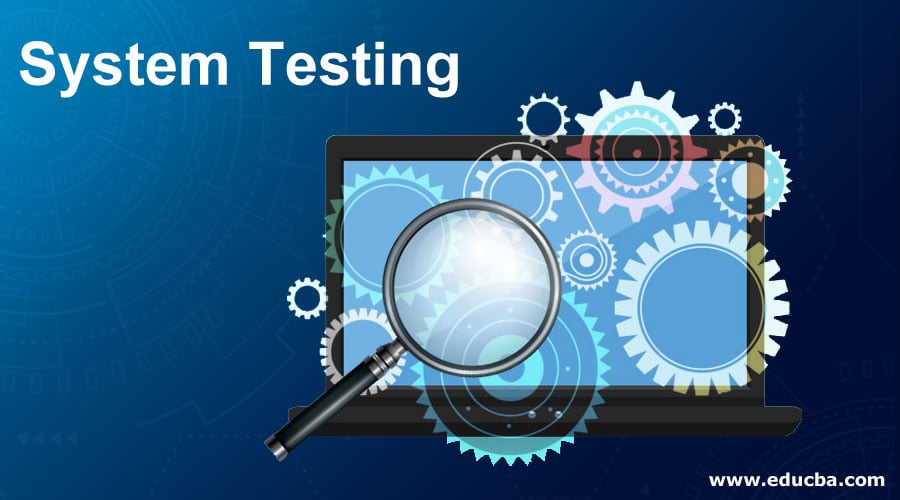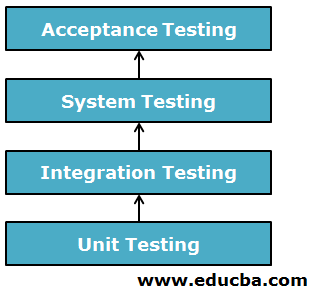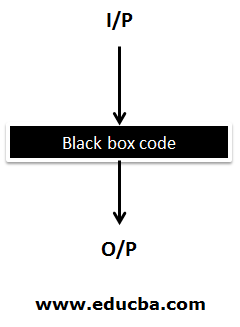Which Test Checks The New System To Ensure That It Works With Actual Data?

Introduction to System Testing
System testing is a process of testing the unabridged system that is fully functional, in order to ensure the system is bound to all the requirements provided past the client in the form of the functional specification or system specification documentation. In near cases, information technology is done next to the Integration testing, as this testing should be covering the end-to-end organization's actual routine.
This type of testing requires a defended Test Program and other test documentation derived from the system specification document that should embrace both software and hardware requirements. By this test, we uncover the errors. It ensures that all the system works as expected. Nosotros check System performance and functionality to get a quality product. Organization testing is nothing just testing the system as a whole. This testing checks complete cease-to-terminate scenarios as per the client's point of view.
Functional and Non-Functional tests also done by System testing. All things are done to maintain trust within the development that the organization is defect-free and problems-costless. Organization testing is as well intended to test hardware/software requirements specifications. System testing is more of a express type of testing; it seeks to detect both defects within the "inter-assemblages".
There are 2 types of Tests:
Those are specialized systems and applications

Earlier jump into the System exam straight I want you to know the flow of testing. So y'all will get a articulate thought. Please look at the following diagram.

Types of Organization Testing
Below are the different types of testing which are as follows:

1. Functionality Testing
- This testing makes sure that the functionality of a product is working as per the requirements specification, within the capabilities of the system.
- Functional testing is washed manually or with automatic tools.
two. Recoverability Testing
- This testing determines whether operations can be continued after a disaster or after the integrity of the system has been lost.
- The best example of this supposes we are downloading one file. And all of a sudden connection goes off. Afterward resuming connection our downloading starts at where we left. Information technology does not start from starting again.
- This used where continuity of the operations is essential
3. Performance Testing
- This testing makes sure the system'south performance nether various conditions, in terms of performance characteristics.
- This testing is likewise called compliance testing with respect to performance.
- This testing ensures that meets the system requirements
- It checks when multiple users use the aforementioned app at a time, and so how information technology responds dorsum
Performance testing can be categorized into iii main categories similar speed, scalability, stability.
iv. Scalability Testing
This testing makes sure the organisation's scaling abilities in diverse terms like user scaling, geographic scaling, and resource scaling.
5. Reliability Testing
- Reliability testing makes sure that the system is bug-free.
- This testing makes sure the system can exist operated for a longer duration without developing failures.
six. Documentation Testing
This testing makes sure that the system'due south user guide and other assistance topics documents are correct and usable.
7. Security Testing
- Testing confirms that the programme can admission authorized personnel and that authorized personnel can access the functions available to their security level.
- This testing makes sure that the system does non allow unauthorized access to data and resource.
- The purpose of security testing is to determine, how well a system protects against unauthorized internal or external admission or willful damage.
There is the post-obit expanse where nosotros mostly can cheque for security:
- Authentication
- Authorization
- Information validation
- Transport security
- Data protection
- Session management
8. Usability Testing
To brand certain that the organisation is like shooting fish in a barrel to employ, learn and operate
9. Requirements Testing
Every system is a requirement tested.
- Directly observations of people using the system.
- Usability surveys have been done under this testing.
- User tests under this testing. Is also called every bit Beta testing.
- This testing test the system every bit to how the real user will work in the environment.
- Usability testing is mainly used for the design of the awarding.
- In a usability test, bodily users endeavor to get typical goals and tasks with a product nether controlled conditions.
This system is used to decide:
- How unproblematic information technology is to understand application usage.
- How easy it is to execute an application process.
10. Load Testing
This testing determines, how the awarding behaves when multiple users admission it simultaneously across multiple locations.
- This testing is done to determine if the arrangement functioning is acceptable at a pre-adamant load level.
- Load testing evaluates arrangement performance with the predefined load levels.
- It checks the normal and predefined conditions of the application.
11. Stress Testing
This testing generally checks the system is going to continue to part when subjected to a large volume of data than expected.
- Stress testing may contain input transactions, internal tables, advice channels, deejay space, etc.
- Stress testing checks that the organization should run equally it would in a product environment.
- It checks the system under extreme conditions.
- Stress Testing is also known as Endurance Testing.
12. Configuration Testing
- Configuration testing is checking that with the multiple combinations of applications with hardware.
- This testing checks for a compatibility issue.
- Determine minimal and optimal H/W and S/W configuration.
- This testing determines the effects of adding or modifying resource like retentiveness, deejay space, CPU, network bill of fare.
13. Compatibility Testing
- Compatibility Testing used to check whether your application is capable of running on different H/Due west, Os, applications, network environments or Mobile devices, etc.
- Like to multi-platform testing.
- Capability testing is more useful in spider web-based applications where nosotros tin can cheque that application must be accessible from every browser.
Key Focus Area
- During Organization testing, the system is tested within the production environment. Before delivery of the production, the Organization should be tested in a production surround.
- The development and production environment may be unlike as per to visitor.
- It should mainly get configuration-related errors.
System Testing Concept
Organization testing falls nether the scope of Black-Box testing. Also, there are testing such equally security, reliability, performance, installation, functional testing, etc.
We also have White-box testing. This is also, known as articulate-box testing. White box testing ways the testing where the internal structure of the testing application is known to the tester. But in this article, we are focusing on black-box testing.
What is Black–Box Testing?
- This testing also is known every bit behavioral testing.
- Black-box testing mainly focuses on input and output as the internal code is hidden from the tester

Organization testing too has some specialized testing equally follows:
1. Regression Testing
This testing depends on time. The cistron is not always enough for this testing. This Testing is done in two means:
- Manual Testing: Manual testing can exist washed for a small Systems. The projection where costs are the issue. Automated testing is non convenient. Developers or quality assurance team manually tests each and every path of the software code can take. And then comparison has happened. This testing is very time-consuming and needs a lot of resources to piece of work on it. This testing is non efficient so the automation testing comes into the flick
- Automatic Testing: This testing is very skilful. Lots of companies trying to get automated testing tools. If we have lots of version changes for an application it's very helpful. Ane class of these tools is called captured playback tools.
2. Error-Handling testing
- To decide the ability of the Organization to procedure erroneous transactions properly.
- All reasonable error is supposed to detect past the application system.
- Control over the error during error correction is a must.
- Procedures generally guarantee that errors are get corrected properly.
- This testing should happen throughout SDLC.
- Errors cover all unexpected conditions.
- It checks the ability of the software to execute all transactions properly.
- For ex: Just put some erroneous values in the application to cheque whether the system is capable enough to find those problems. This process may be iterative.
3. Inter-System Testing
- This testing is washed when an awarding is placed in a distributed area. And all placed integration happens. This testing is mainly washed to check the flow of data from the hosted primary system to other systems.
- In brusque, we can say that "The testing of an interface betwixt two or more application systems."
This decides: Documentation for the organization is complete and accurate. Parameters and data are correctly passed between the two applications.
- At that place are chunks of sets of tests that transaction from one system to another system and vice versa is executing properly. crosschecks have happened and if an fault happens then it gets corrected at that time.
- This testing ensures information menstruum between applications.
- This testing is ho-hum if automation is not washed.
- Price is more if iterations are more.
4. Sanity Testing
- Sanity testing means checking the beliefs of the System. This testing is also called narrow regression testing.
- Sanity tests are useful for both initial environs validation and time to come interactive increments.
- Sanity testing is a focused 1.
- This testing is also considered a subset of regression testing.
- Ex of Sanity testing is, nosotros tin can say suppose nosotros need the system uptime. How must the time system have to get up?
- Sanity testing was initially designed to examination cadre modules.
- Sanity testing may bank check connectivity with application servers and with peripheral devices.
5. Smoke Testing
- Generally, Smoke testing is also known as "Build Verification Testing".
- This term has come from hardware testing. In Hardware testing, the device passed the test, if it did non grab fire or smoked the first time it was turned on.
- Smoke testing checks the testability of the software is termed Smoked testing.
- Smoke testing decides whether testing is enough for the application. Is information technology stable?
- Smoke testing helps to determine where to stop.
- Fume tests can be performed manually or with automatic tools.
- The smoke test scenarios emphasize breadth more than depth.
- Fume testing is too known as Verification testing/Link testing/Bones Functional testing.
- This is a "Shallow and wide" approach to the application.
- Smoke testing helps to betrayal problems early.
- Smoke testing also helps to detect integration testing.
- In smoke testing, all components should be touched, and every major feature should be tested briefly.
- If a test fails, the build is returned to developers un-tested.
- Smoke testing is generally used in System testing, Acceptance Testing, and Integration testing.
6. Parallel Testing
- Parallel testing means testing multiple applications or subsystems at a time concurrently.
- Nosotros can say that a comparison between two unlike systems.

- Parallel testing is to determine – New version of an application or new system performs correctly with the reference to the existing organisation that working correctly.
- Parallel testing can be used when accepting a new system.
- While doing parallel testing the same information is used on both the arrangement.
- In parallel testing, a new system is used with an existing organisation for some stipulated time.
- Through cross-checking of the o/p and comparing with o/p from the existing organization. Parallel testing is done to get ensure the new system is working up to the mark equally the previous system used to practice.
Determination
Every software development process has a testing part. If software possesses all the tests and satisfies all the conditions and then information technology's ready for handover to the client. Testing is a crucial part and has to be done very seriously.
Recommended Articles
This has been a guide to Arrangement Testing. Here we have discussed the introduction to system testing, Various types, and its central focus surface area. you may besides look at the following articles to learn more –
- Careers in Software Testing
- Penetration Testing Interview Questions
- Defect Life Wheel
- Software Testing Methodologies
Which Test Checks The New System To Ensure That It Works With Actual Data?,
Source: https://www.educba.com/system-testing/
Posted by: whiteleyanyther.blogspot.com



0 Response to "Which Test Checks The New System To Ensure That It Works With Actual Data?"
Post a Comment